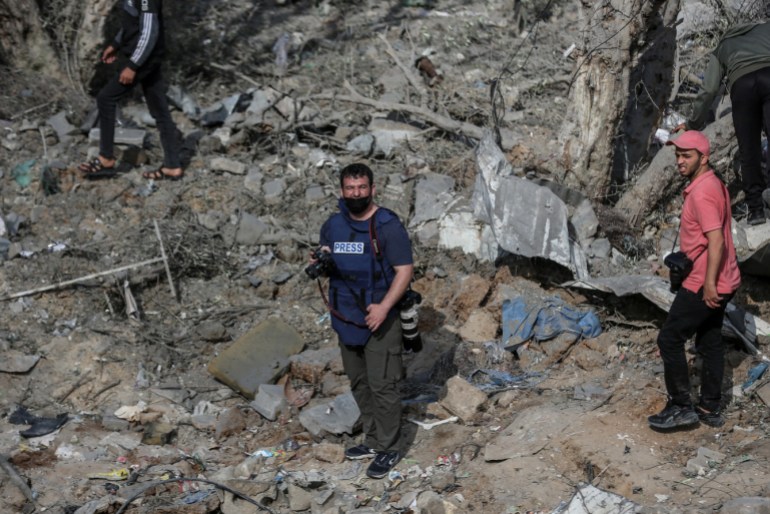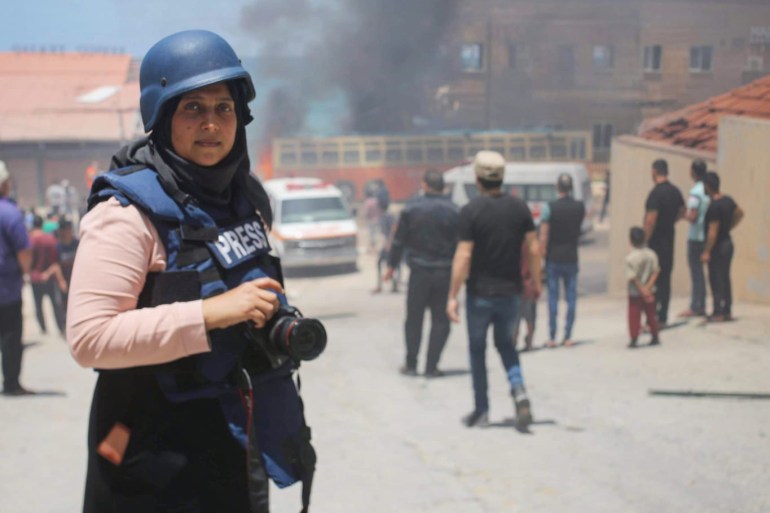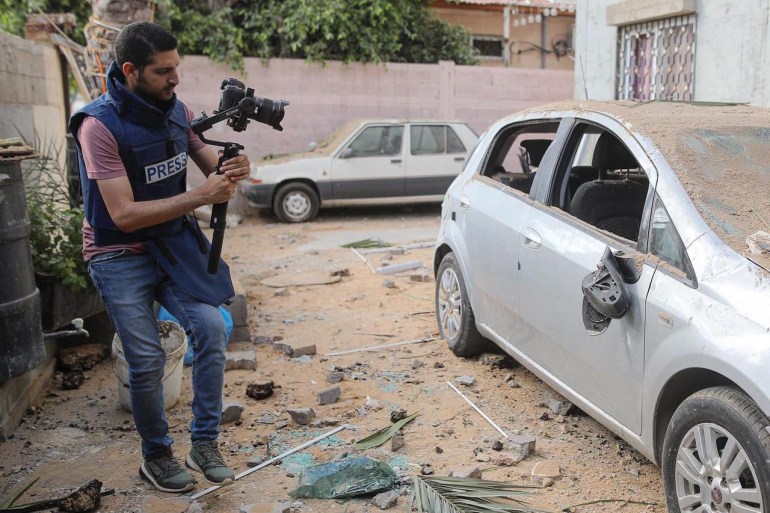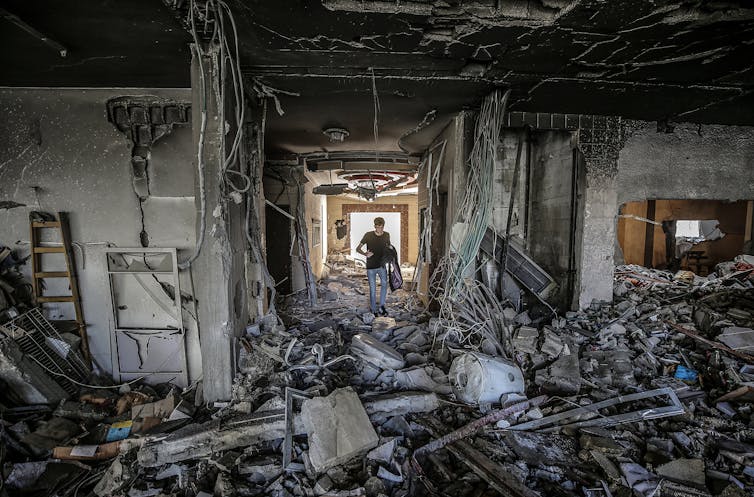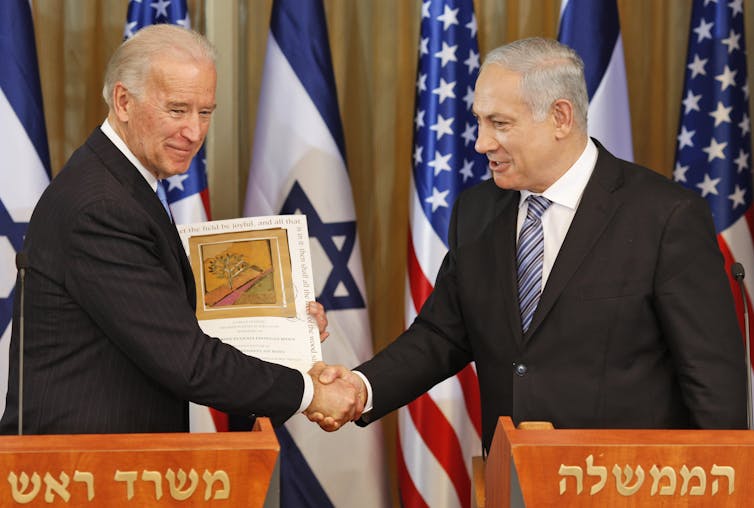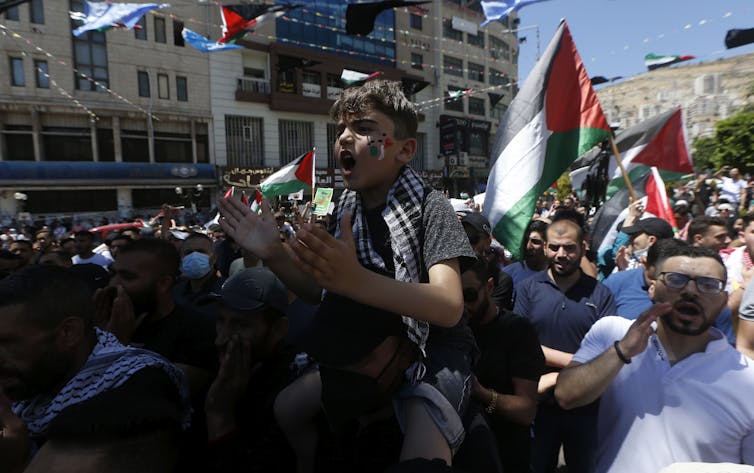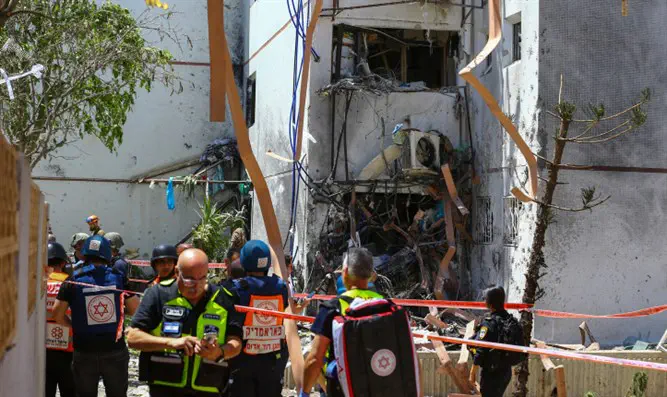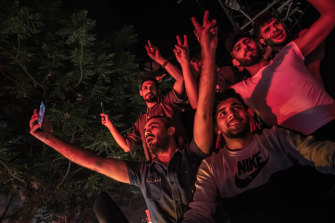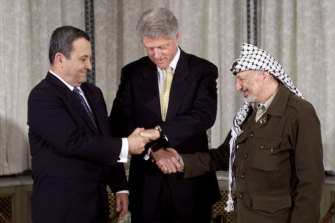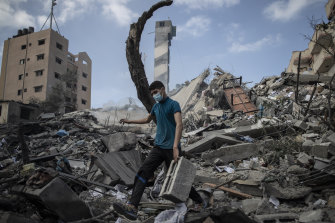Gaza – Several Palestinian journalists have spoken to Al Jazeera of their fear and the exhaustion of covering the continuing Israeli bombardment of the besieged Gaza Strip and their determination to continue their work.
The latest violence erupted on May 10, when Israel launched air raids on Gaza after Hamas, the Palestinian group which controls the territory, fired rockets into Israel.
The escalation followed weeks of soaring tensions in occupied East Jerusalem, with Israeli forces wounding hundreds of protesters in a crackdown at the Al-Aqsa Mosque compound, a site revered by Muslims and Jews. When Israel missed a Hamas deadline to withdraw its forces from the area, the group fired several rockets towards Jerusalem.
At least 222 people have been killed in the Israeli bombardment of Gaza, according to health authorities, including 63 children. At least 12 people have been killed in rocket attacks on Israel, including two children.
Israeli raids on Gaza have seen several high-rise buildings targeted, including the al-Jalaa tower block that housed international media offices. Press freedom advocates have condemned the attack as an attempt to silence journalists.
Israel has also destroyed the al-Jawhara and al-Shorouk office buildings in Gaza City, which housed more than a dozen international and local media outlets.
Early on Wednesday, Yousef Abu Hussein, a journalist with al-Aqsa Radio station in Gaza, was killed in an Israeli strike on his home in the Sheikh Redwan neighbourhood in the northern Gaza Strip.
Al Jazeera spoke to four Palestinian journalists about their experiences covering the bombardment of Gaza.
Ghalia Hamad
During her live reporting, Ghalia Hamad is in constant contact with her daughters back at home, checking on their wellbeing.
“Every time I hear a bomb, I feel panicked and instantly call home to check on my family,” she told Al Jazeera.
The 30-year-old journalist, who works as a correspondent for Al Jazeera Mubasher in the besieged Gaza Strip, has two daughters, aged five and one and a half years old.
“This is a brutal war. It is the first time that we’ve experienced such an offensive with this ferocity. The latest war of 2014, and the other wars of 2012, 2009 were difficult, too, but this one is the most.”
Like other journalists in the field, Hamad has not stopped working since the escalation.
“We have to deal with the dangerous situation around us. We have nothing to protect ourselves. Everyone is a target and under fire,” Hamad told Al Jazeera.
“I’m trying to perform my job without thinking of the harm that I may face. We lost our offices that were bombed a few days ago.”
Like any other mother, Hamad wishes to be beside her family, especially her daughters, to assure them during these tough times, “where the sounds of bombing are too heavy and everywhere”.
“When I hear that a bomb hit near my home, I immediately call to check,” Hamad said.
“Though, I won’t leave. I have to continue passing the message and telling what is happening to the people.”
Hossam Salem
Photojournalist Hossam Salem had not planned to cover the latest flare-up in violence. The photographer left Gaza for Turkey two years ago but returned to visit his family, arriving on the same day that Israel began air raids on the territory.
“I was planning to mark the Eid holiday with my family. Yet, I surprisingly was welcomed by the heavy strikes and bombing upon my arrival. It was a big shock for me,” the 32-year-old photographer said.
“I joined the coverage field without even seeing my family,” he added.
Salem has worked as a photographer for more than 10 years. He covered the three most recent wars on Gaza, as well as the Great March of Return, a series of protests in 2018.
Salem’s work has been published in Al Jazeera English, the New York Times and several international agencies.
“My experience this time is different. The situation is very difficult. There is a big risk going to the places that were bombed without knowing if the bombing has stopped or not.
“The Israeli air strikes affected everything: towers, residential buildings, streets, homes, even the international news agencies’ offices.
“I have many fears, especially my family, where I steal few hours to go and see them and get back to the field. This is the tax of our work. We have to deal with the dangers of any Israeli attack.”
Samar Abu Elouf
Samar Abu Elouf works from early morning until evening to cover updates in Gaza. She is a freelance photographer, filing for the New York Times and news agencies.
“The coverage of this offensive is much harder than the previous times. The bombing is everywhere, and the types of weapons used are different,” the 33-year-old photographer said.
A mother of four children, Abu Elouf said that leaving her kids is her “weak point”.
“It really hard to leave your children alone, while they are very afraid of huge sounds of bombing around them.”
A few days ago, Abu Elouf and her family evacuated their home, after an Israeli missile struck their neighbour’s home.
“Those were horrific moments. My children were crying and we left the home as quick as we can. My home was badly damaged by the bombing. Shrapnel from the missile penetrated the roof,” Abu Elouf said.
Despite these pressures, Abu Elouf says that the difficulties will not stop her from continuing her work, and that they increase her determination to cover the story.
“I’m trying to cope with the situation and stay as safe as possible,” she added.
“It’s sad to see the towers and buildings that we used to work from being bombed. In every place we have unforgettable memories,” Abu Elouf said.
Rushdi al-Sarraj
Rushdi al-Sarraj, 29, is a journalist and a filmmaker at the Ain Media company.
“My work is not only reporting what is happening, but it merges between journalism with filmmaking, which focuses on telling news stories, what’s behind the news,” he said.
“I always look for the people who survived from under the rubble of their buildings, trying to cover their stories within the frame of short stories and films.
“This task is difficult under normal circumstances, so you can imagine working under a fierce offensive that does not distinguish between a journalist, a civilian or a military leader.”
Regarding the Israeli bombing of media buildings, al-Sarraj says Israel is working hard “to silence the image and voice, and to ban any news or information that exposes its crimes”.
“Israeli occupation killed many Palestinian journalists. My colleague in my company, Yasser Murtaja, was killed in the peaceful protests of the Great March of Return two years ago, and now the targeting of journalists is continuing,” he said.
Al-Sarraj says the task of journalists in Gaza is dangerous, due to a lack of protective equipment such as helmets, which are banned from entering the Gaza Strip under the continuing blockade.
“It always hard to separate between your feelings as a journalist and as a human being when you see the atrocious scenes of blood and people under the rubble,” al-Sarraj said.
“My family doesn’t stop calling me, fearing that I could be harmed. It is an endless circle of fear and exhaustion. But we must continue sharing our message.”
By Maram Humaid
Al Jazeera


